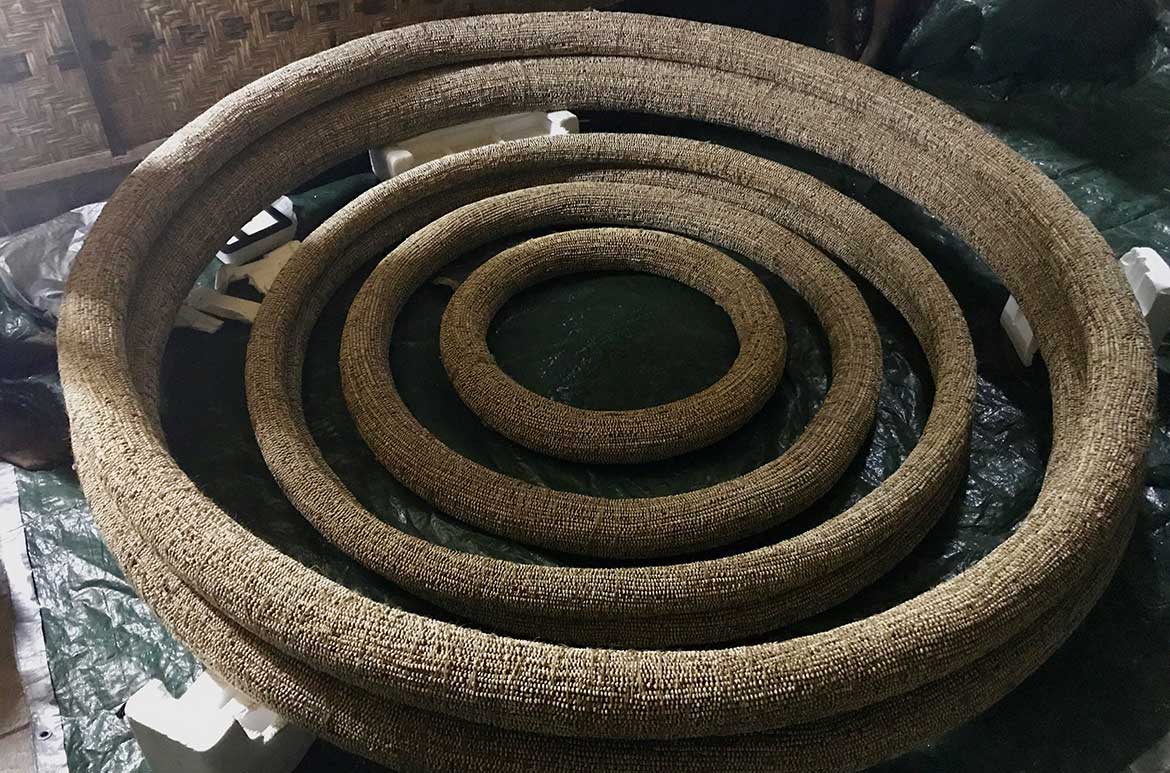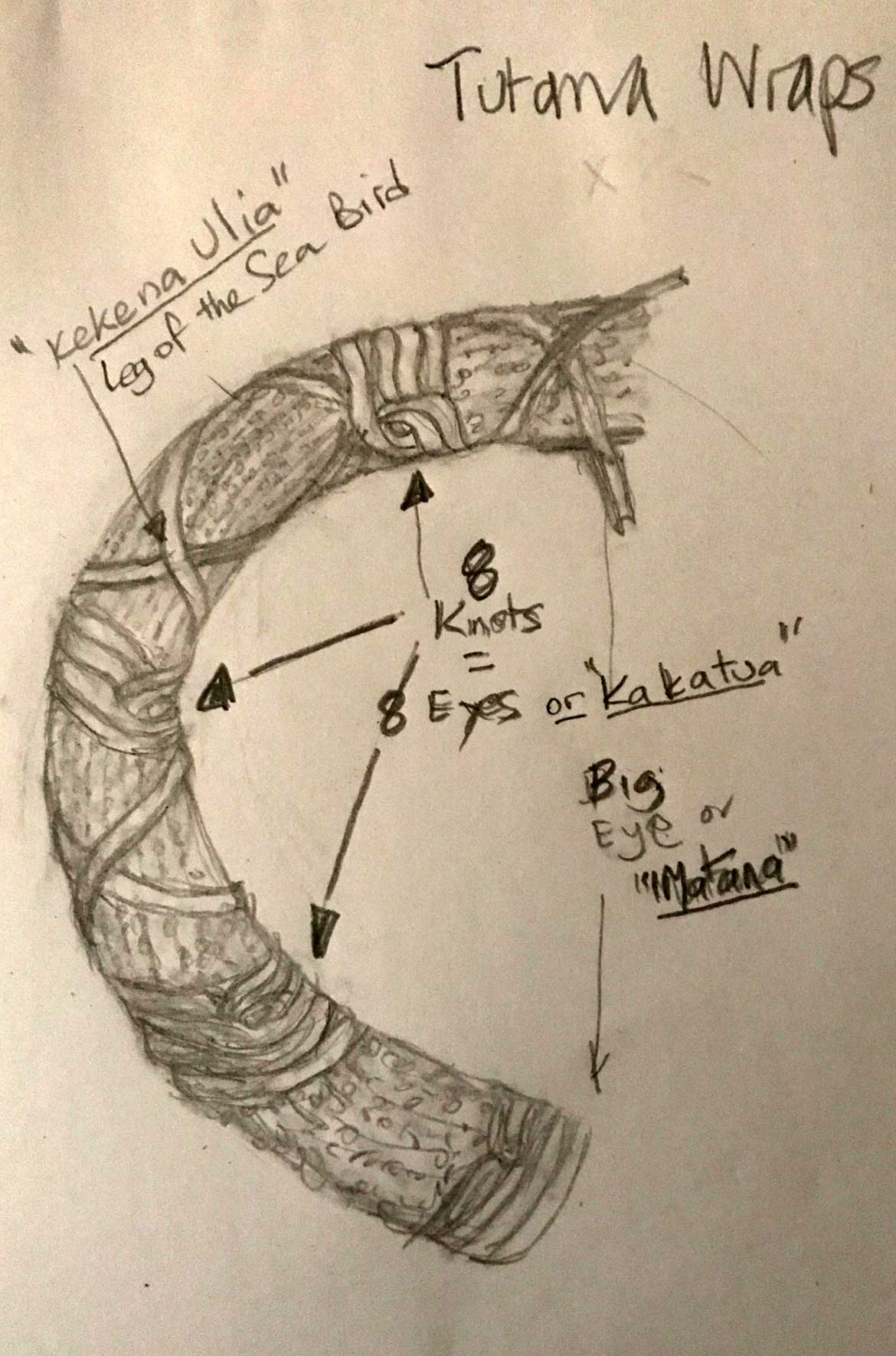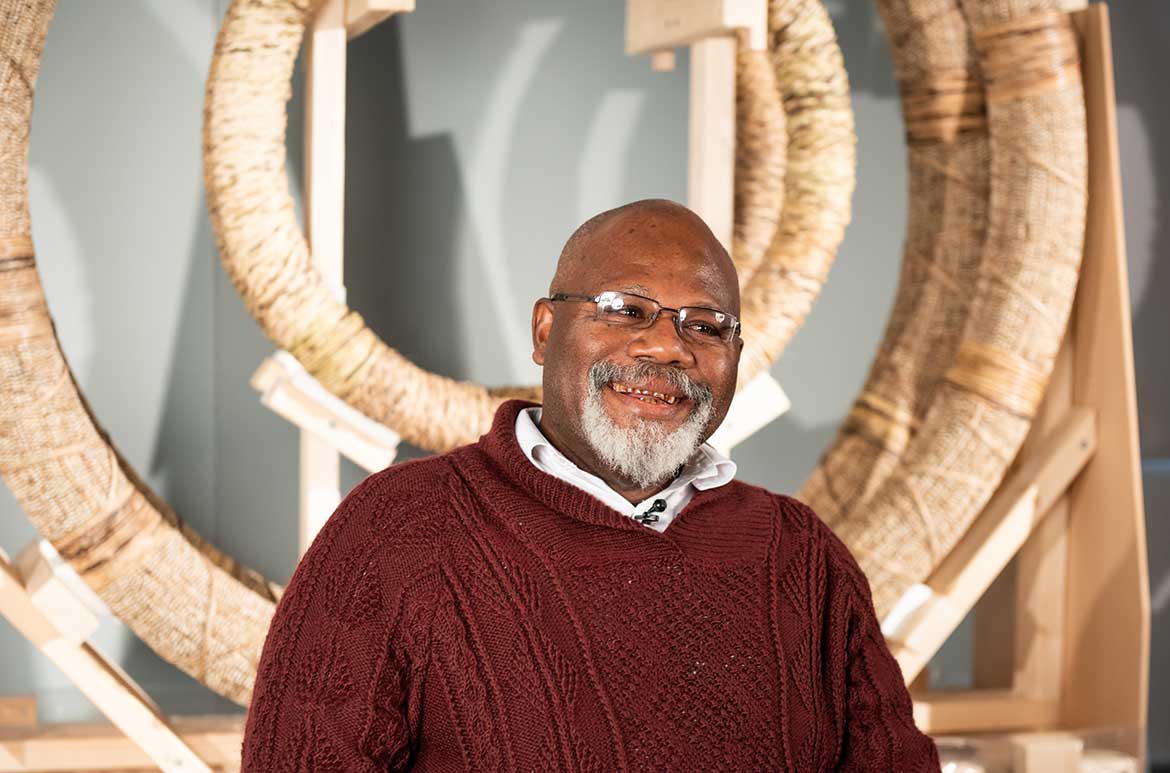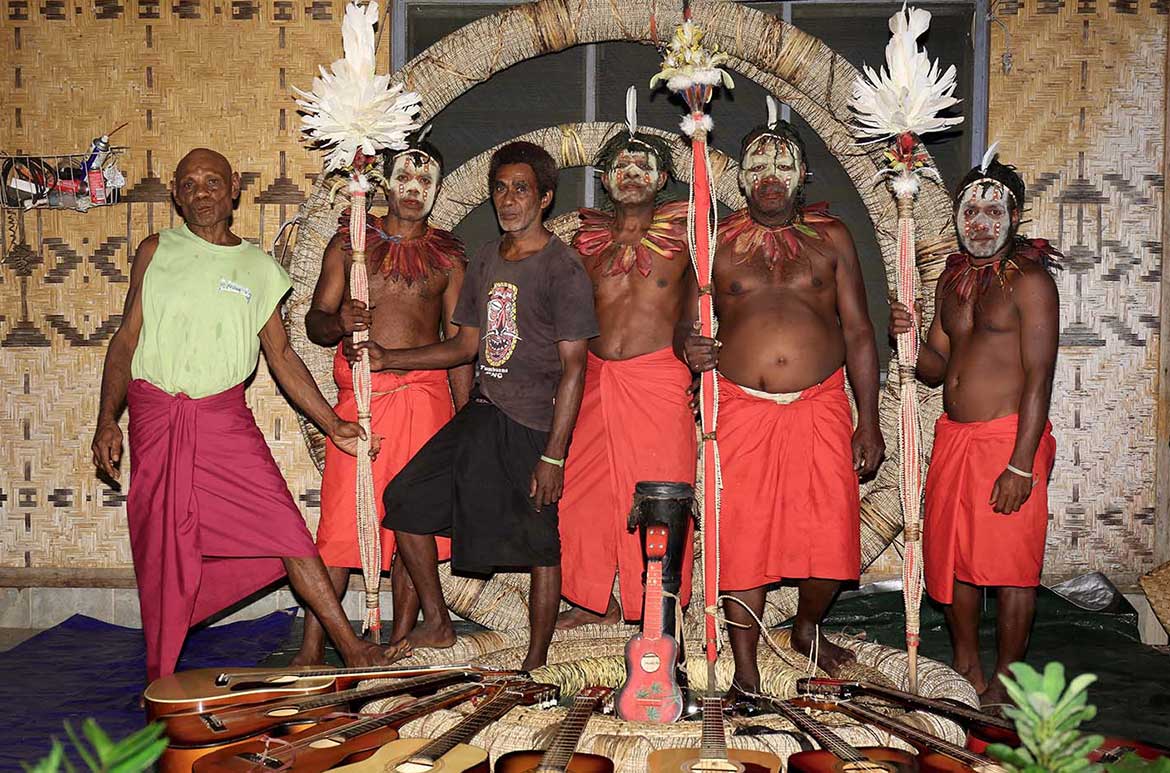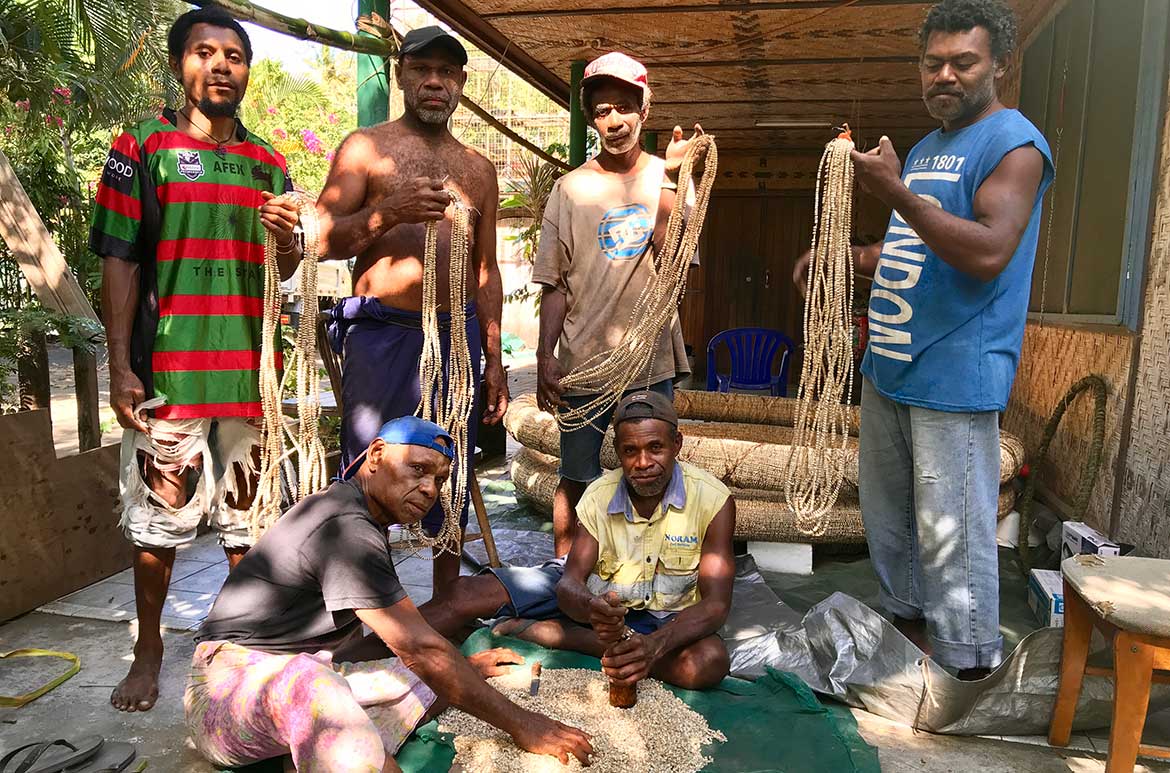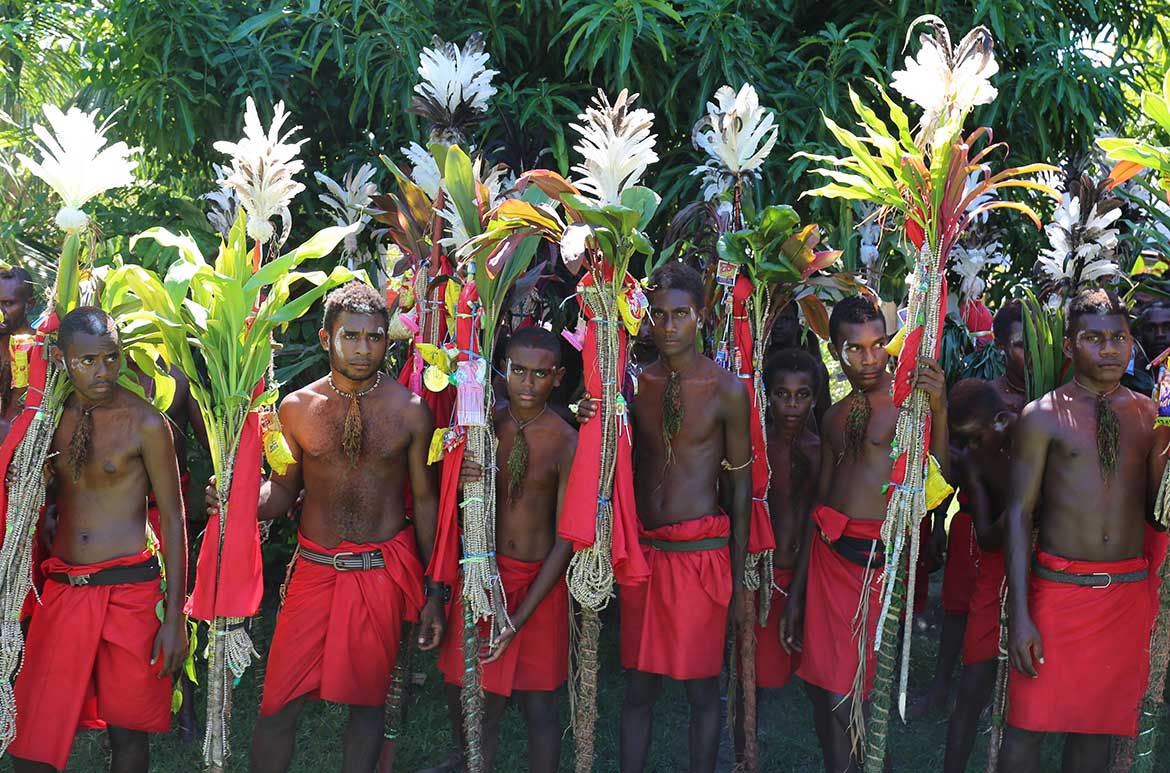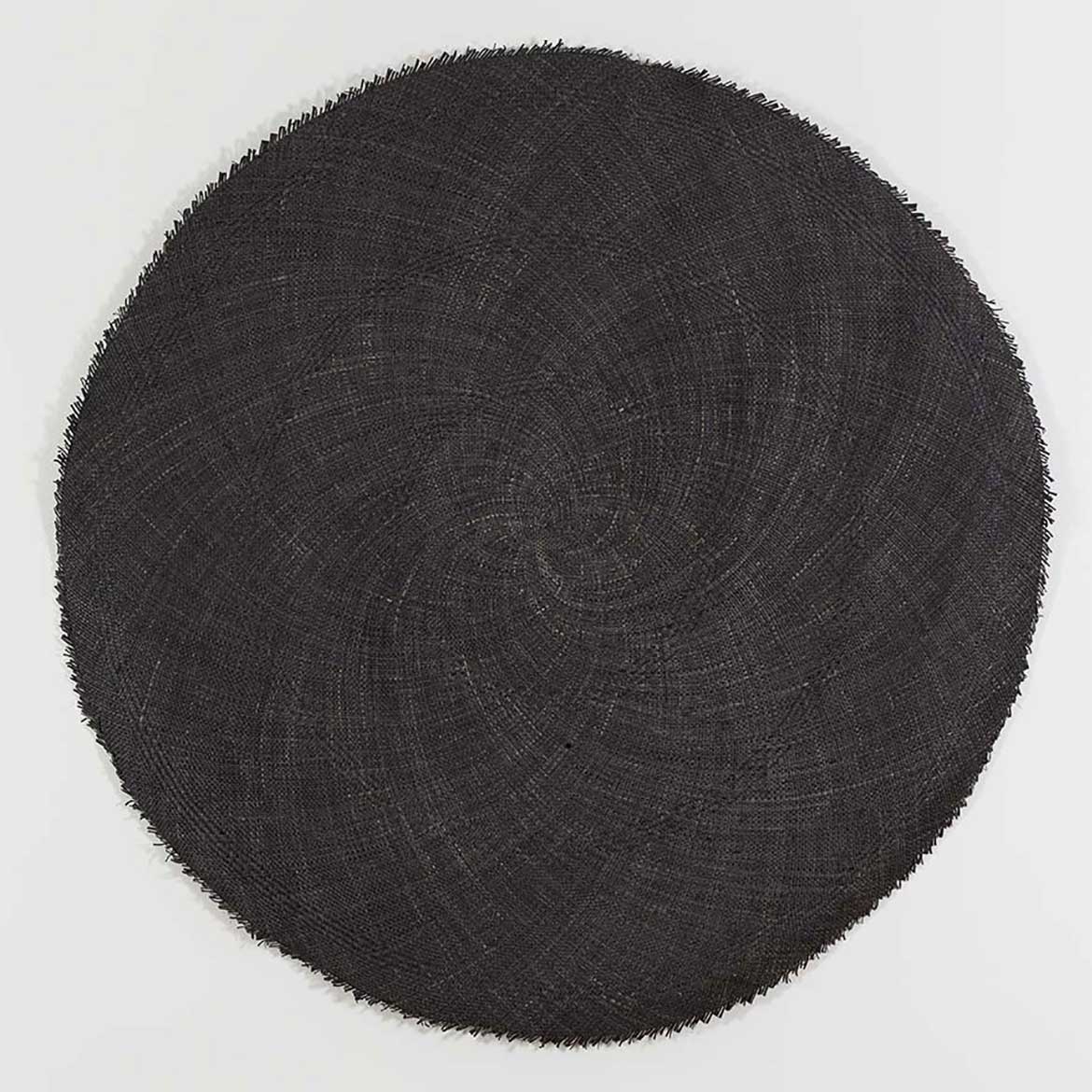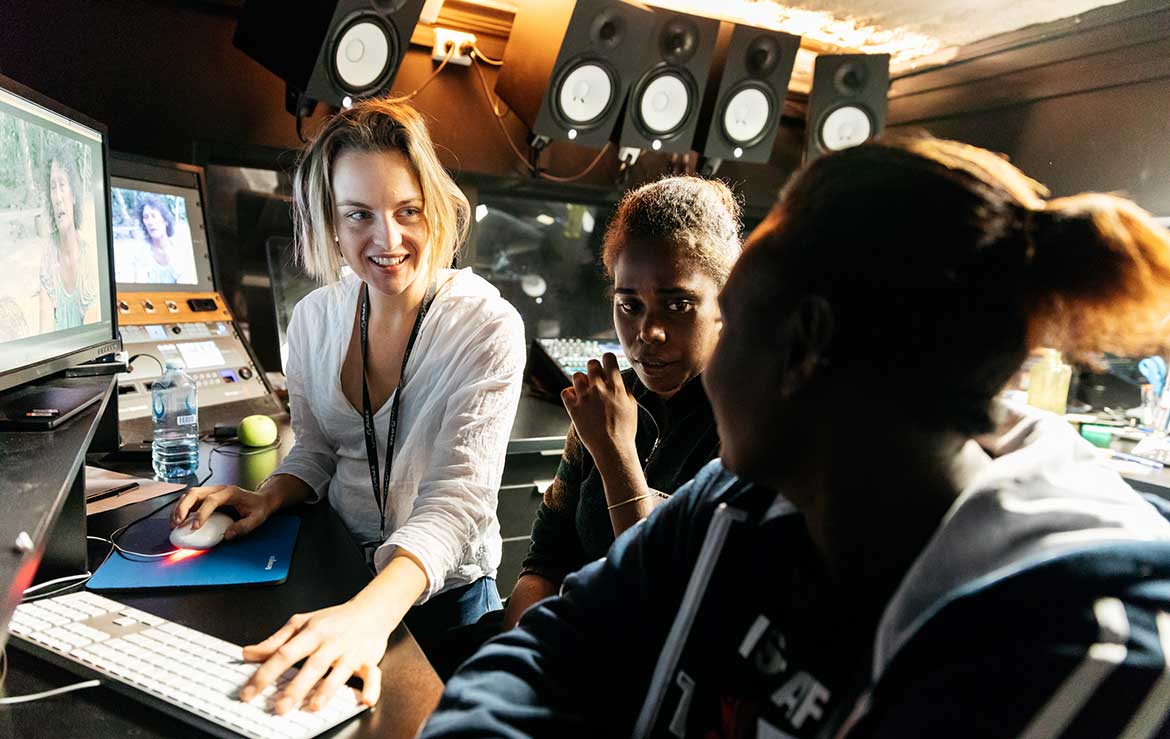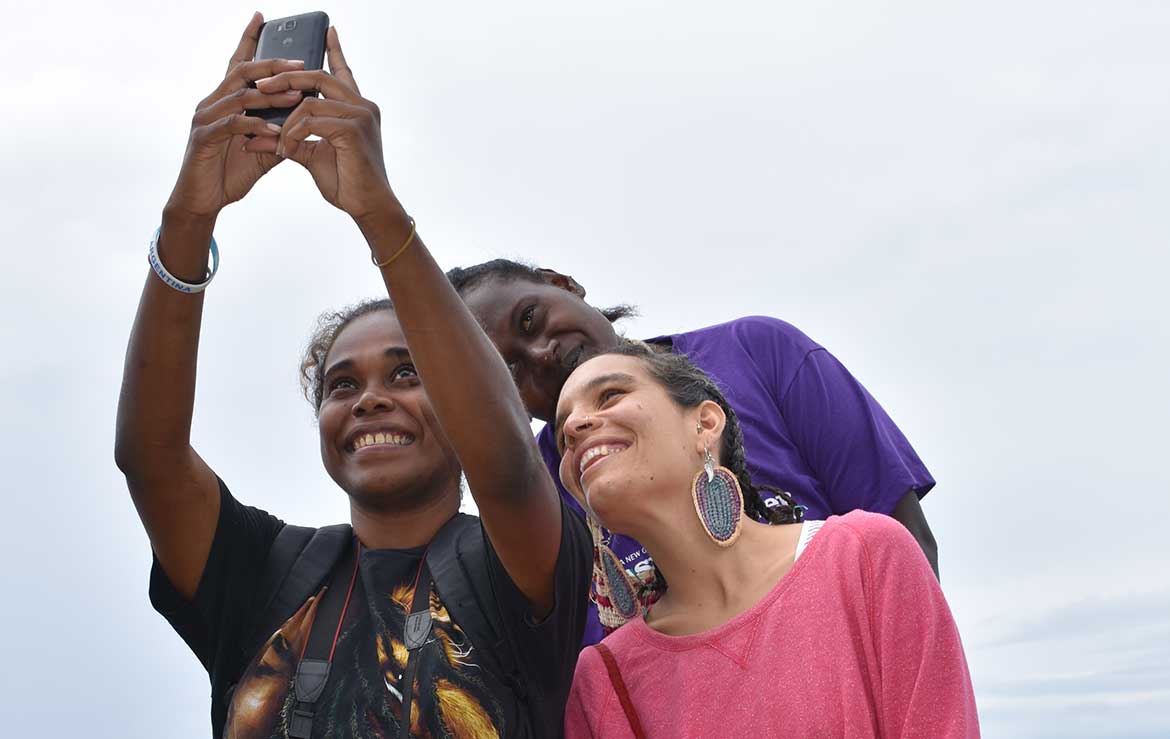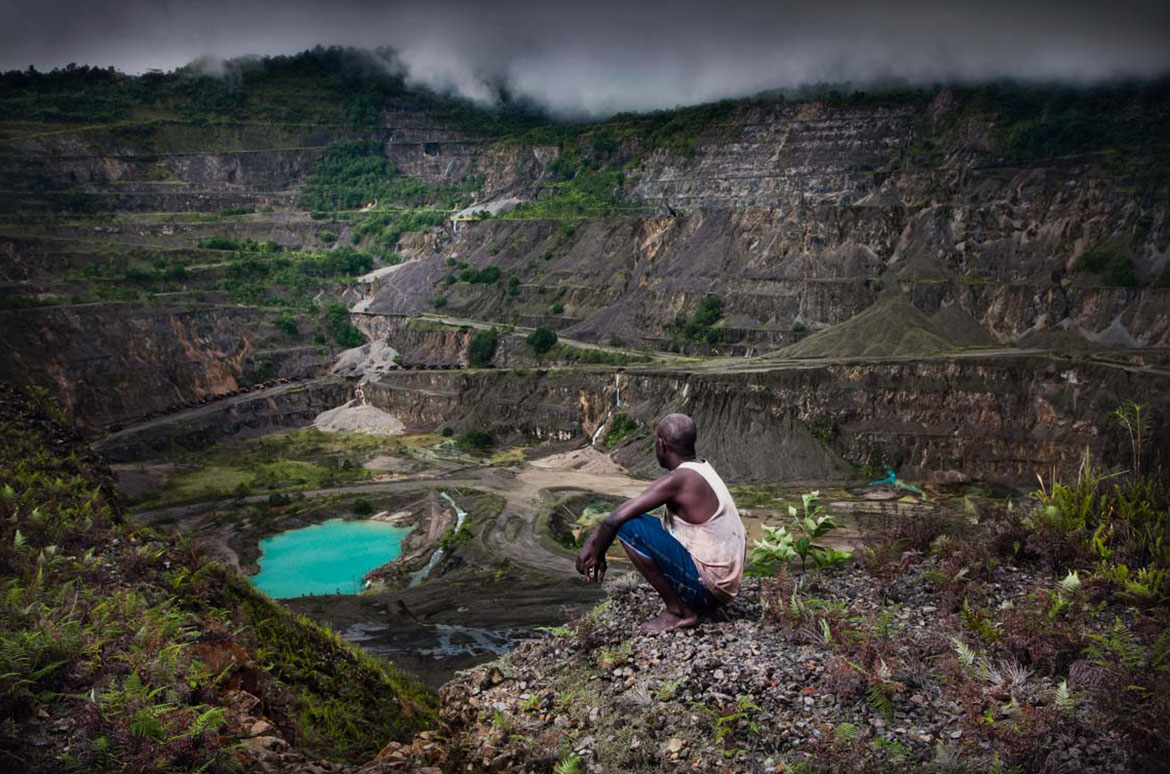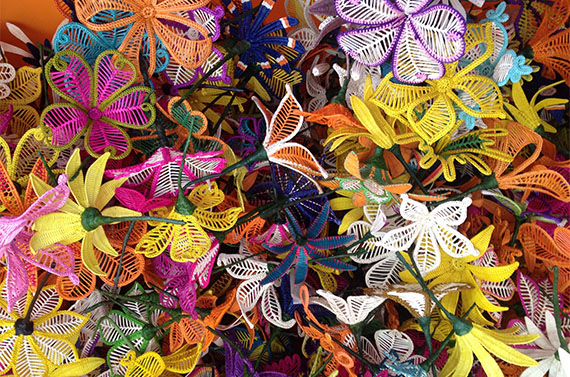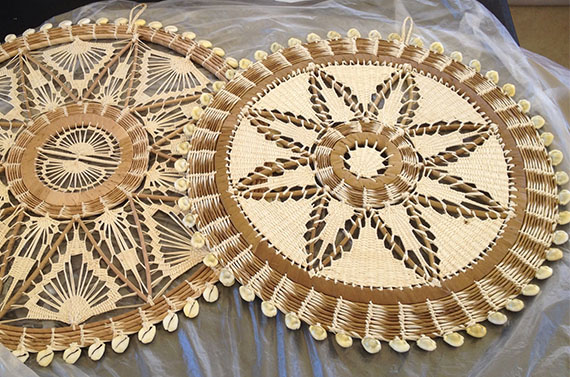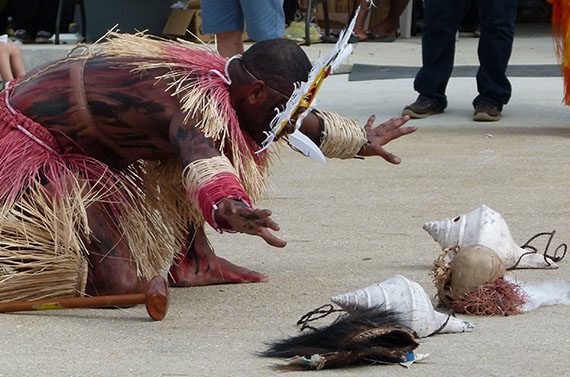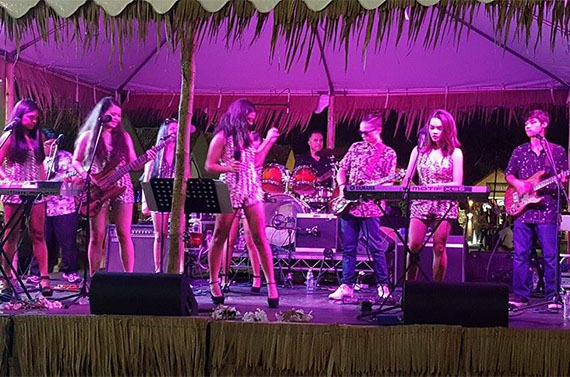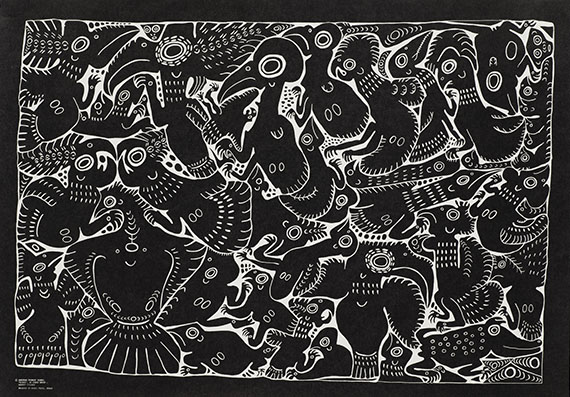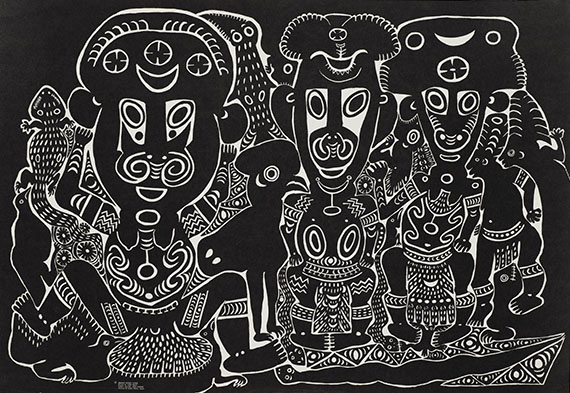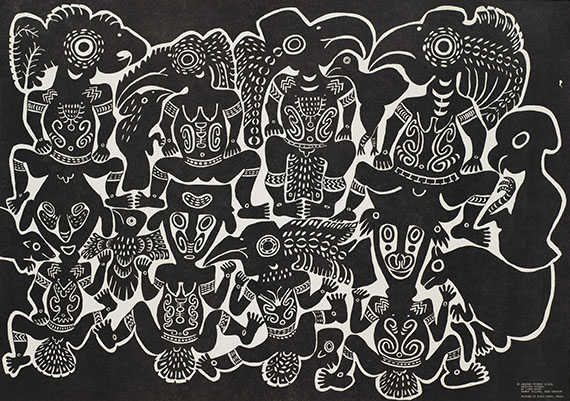The ‘Women’s Wealth’ project focuses on what contemporary art can mean for women living in villages in Bougainville and the Solomon Islands. Envisaged as a collective collaboration rather than a static installation, the project involves public engagement that extends beyond the walls of the gallery, including the Women’s Wealth website.
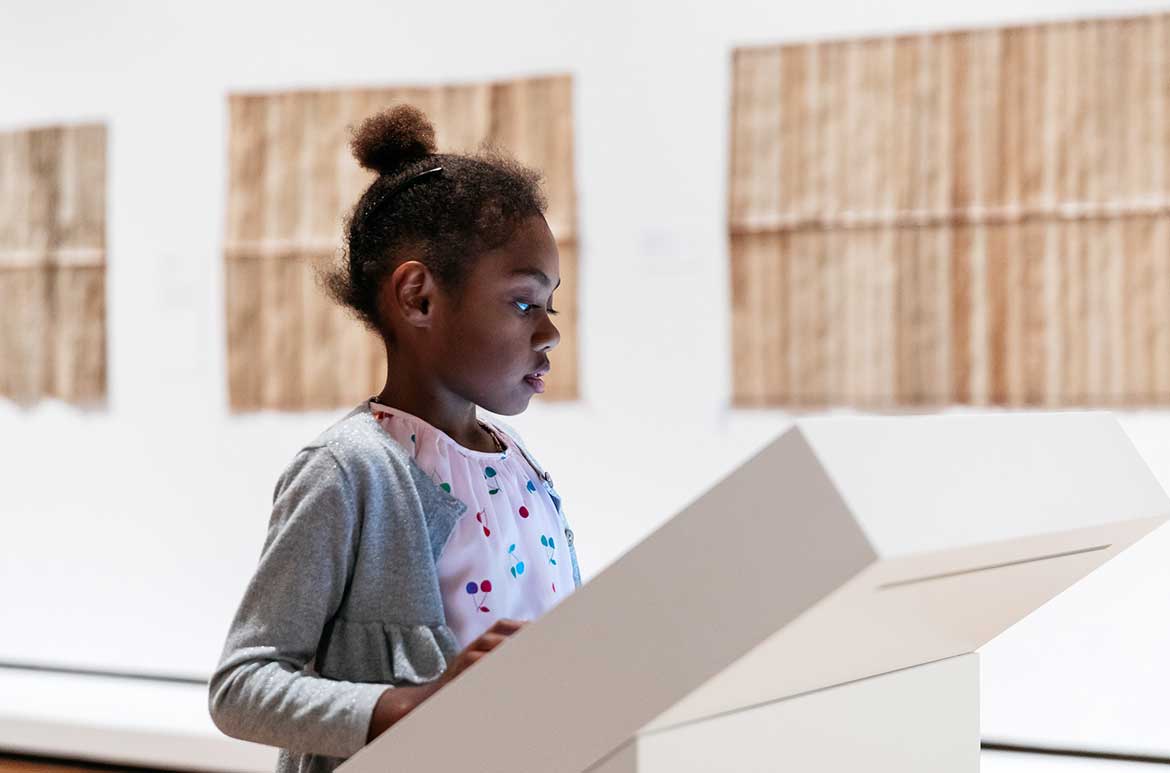
The website introduces audiences to the extensive development of the ‘Women’s Wealth’ workshop at the Nazareth Rehabilitation Centre in North Bougainville in September 2017 where the making began. Pursue the profiles of each individual artist and their geographical and cultural contexts which give their artworks specific meaning. Explore the project through the 3D interactive with a virtual experience of the exhibition.
Designed and created by Brisbane based Ortelia Interactive Services, the interactive has been developed from over 14,581 individual photographs which allows you to move 360 degrees around the sculptural works, zooming in to pick up the intricacy of the women’s stitching and panning back out to enjoy majestic sight lines through works. The 93 works out of 154 available as 3D images include stills from Taloi Havini’s immersive multichannel video Habitat 2018 and the full length of Women’s Wealth documentary by Jesmaine Gano and Georgianna Lepping. Quickly locate an artist and artwork details and expanded texts and secondary images documenting process and materials.
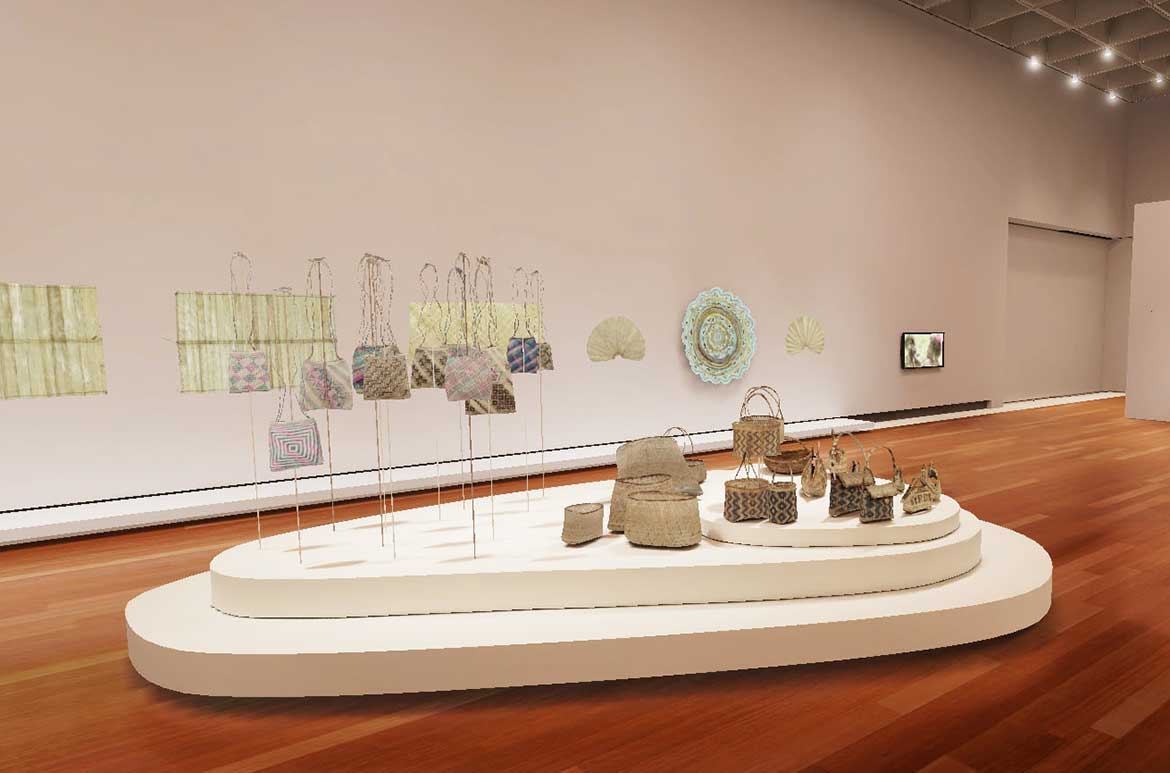

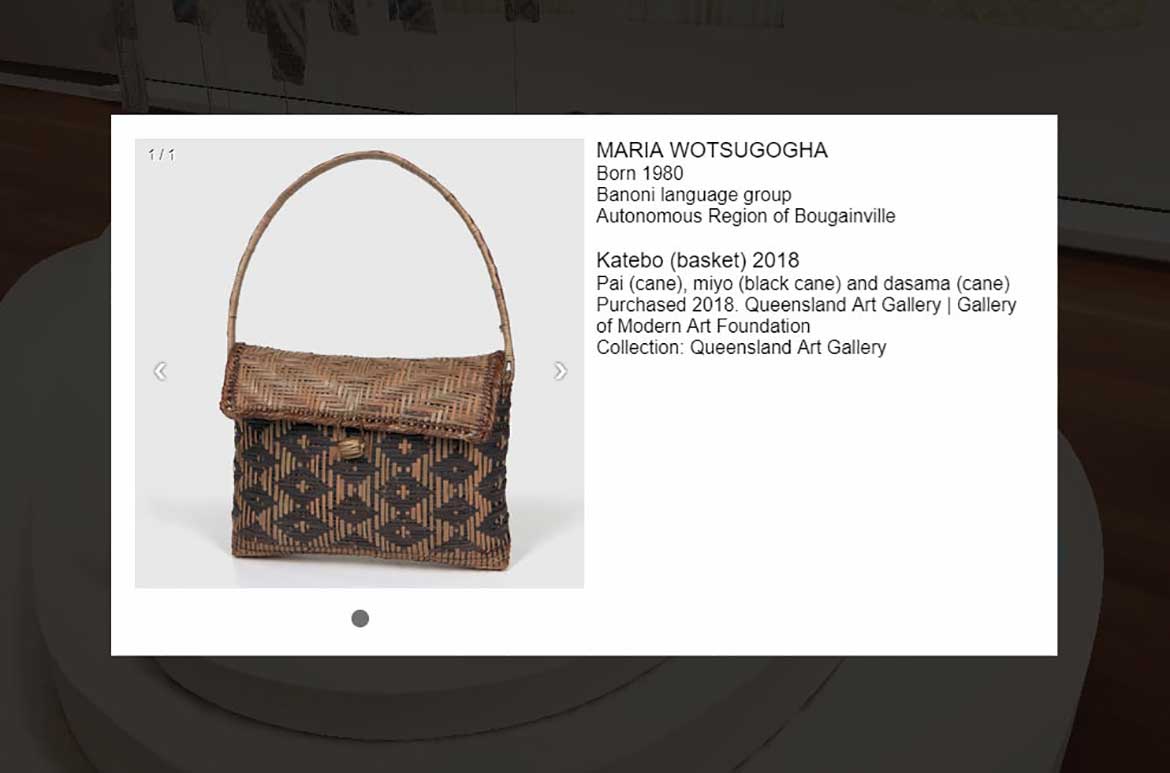
In addition to enabling access to audiences around the globe, both the interactive and the accompanying 3D photographic documentation of ‘Women’s Wealth’ for Google cardboard will return the project to the site of its inception in the remote villages of Bougainville and the Solomon Islands. Armed with this virtual tool via mobile phone apps and local downloads, ‘Women’s Wealth’ artists will be able to share the experience of their work and its presentation within an international exhibition with family, clan and community leaders. This is of significant value to the ‘Women’s Wealth’ team.
In the context of Bougainville and the Solomon Islands, ideas of self are understood primarily via one’s relationships with others. Works of aesthetic expression created within this context are often an articulation of, and an act of service to this relational network. Many of the artists in ‘Women’s Wealth’ have worked with collectively owned forms, designs and knowledge which they would customarily only create for the benefit of family and clan. A number also worked collaboratively with other women to collect and prepare materials and make works.
While only a select few of these artists were able to travel to Brisbane to participate in the opening of APT9, the ‘Women’s Wealth’ team is excited that the website and its interactive acknowledges this larger network and enables the opportunity to experience the works presentation and to engage in conversations around the meaning of the works in this new context.
Ruth McDougall is Curator, Pacific Art, QAGOMA
Watch our Women’s Wealth documentary
Watch a Performance of Bougainville dance
Women from the Brisbane Bougainville Community Group Inc. perform a range of dances from across the Autonomous Region of Bougainville during APT9. The women are supported by Bougainville men creating the dynamic rhythmic sounds of the traditional bamboo band, but using PVC pipes and flip-flops.
Subscribe to QAGOMA YouTube to go behind-the-scenes at exhibitions / Watch APT9 videos or Read about Asia Pacific artists
Purchase the APT9 publication
APT9 has been assisted by our Founding Supporter Queensland Government and Principal Partner the Australian Government through the Australia Council, its arts funding and advisory body, and the Visual Arts and Craft Strategy, an initiative of the Australian, State and Territory Governments.
Women’s Wealth has been supported by the Australian Cultural Diplomacy Grant program, DFAT and the Gordon Darling Foundation.
Feature image detail: Installation of the ‘Women’s Wealth’ project during APT9, Queensland Art Gallery
#APT9 #QAGOMA
